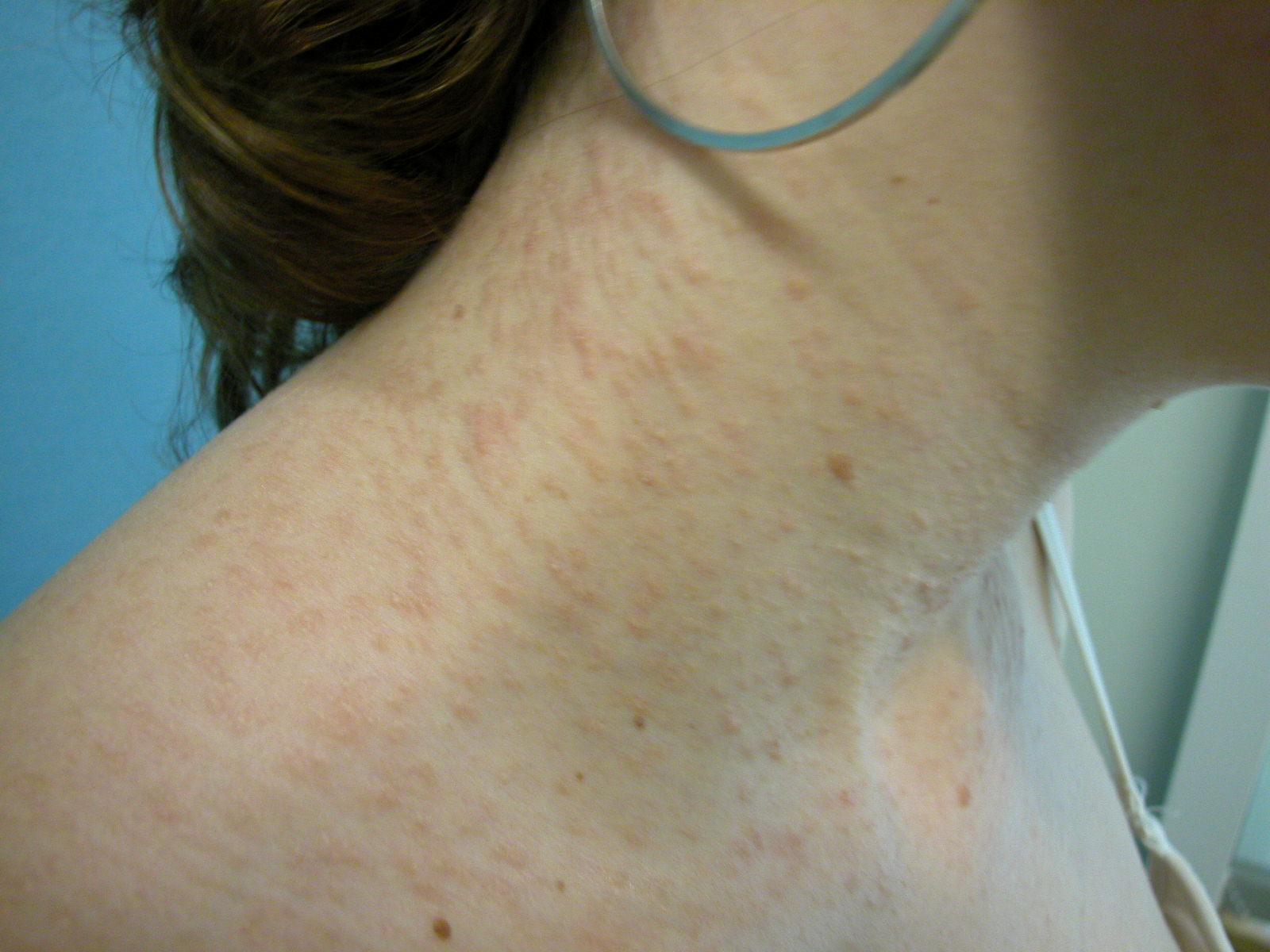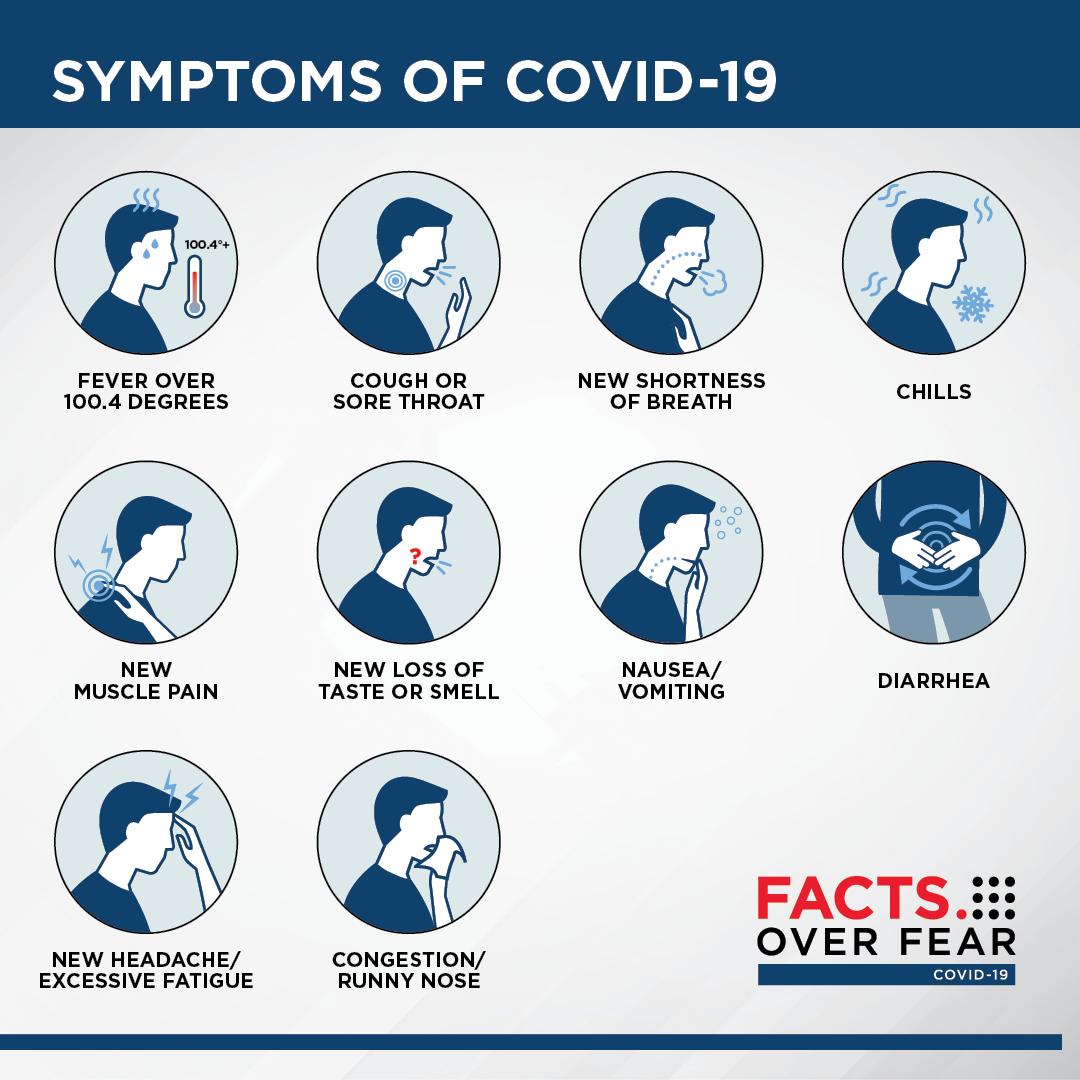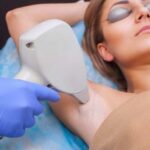Eruptive syringomas, benign sweat duct tumors often presenting as small, flesh-colored or yellowish bumps, may seem insignificant to some, but for countless African Americans, the appearance of these lesions can be a source of concern, insecurity, and confusion. While typically benign, syringomas can manifest more prominently and numerous in individuals with darker skin tones, leading to a greater impact on self-esteem and social interactions. This article seeks to provide a comprehensive understanding of eruptive syringomas, shedding light on their specific implications for African Americans, and offering a beacon of hope through emerging treatments and management strategies. Together, by embracing knowledge and advancements in dermatology, we can navigate this common but often overlooked condition, fostering a journey of healing and renewed confidence for those affected.
Table of Contents
- Understanding Eruptive Syringomas: A Closer Look at This Skin Condition
- The Prevalence of Eruptive Syringomas in African American Communities
- Recognizing the Symptoms and Seeking Early Medical Intervention
- Innovative Treatment Options: From Topical Treatments to Advanced Therapies
- Empowering African Americans: Community Support and Resources for Healing
- Q&A
- Final Thoughts
Understanding Eruptive Syringomas: A Closer Look at This Skin Condition
Eruptive syringomas are small, benign sweat duct tumors that often present as multiple, flesh-colored or yellowish papules on the skin. These lesions tend to manifest in clusters, particularly around the eyelids, upper cheeks, and neck, but can also appear on the chest, abdomen, and underarms. While the condition is more commonly observed in women, individuals with darker skin tones, such as African Americans, are also notably affected. Understanding the characteristics and triggers of this condition is essential for effective management and treatment.
- Appearance: Small, raised bumps, typically 1-3 mm in diameter.
- Color: Flesh-colored to yellowish.
- Location: Predominantly on the face, but can spread to other areas.
- Symptom: Generally asymptomatic but can sometimes cause mild itching or irritation.
The exact cause is still not completely understood, but a combination of genetic and hormonal factors is believed to play a role. For African Americans, the distinct feature of their melanin-rich skin can influence the presentation and treatment options for the condition. Proper skincare and management strategies need to be tailored specifically to their dermatological needs to ensure better outcomes without compromising the natural beauty and health of their skin.
Effective treatment options for eruptive syringomas often involve a multifaceted approach. These can include:
- Topical Treatments: Such as retinoid creams or chemical peels.
- Laser Therapy: Less invasive and effective for pigmentation issues.
- Surgical Removal: For more severe cases, though it may leave scarring.
- Natural Remedies: Including certain oils and creams that help soothe and reduce inflammation.
| Treatment | Pros | Cons |
|---|---|---|
| Topical Treatments | Non-invasive | Gradual results |
| Laser Therapy | Quick results | Potential pigmentation issues |
| Surgical Removal | Direct and effective | Risk of scarring |
| Natural Remedies | Gentle on skin | May require long-term use |
In the journey towards hope and healing, it’s essential for African Americans to work with dermatologists who understand their unique skin care needs. Celebrating diversity in dermatology leads to better, more inclusive care. With advances in medical and natural therapies, living confidently with eruptive syringomas is entirely possible. Together, let’s shine a light on this condition and foster an environment where everyone’s skin thrives equally.

The Prevalence of Eruptive Syringomas in African American Communities
In recent years, medical studies have increasingly highlighted a unique dermatological condition affecting African American communities. **Eruptive syringomas**, though relatively rare, are benign tumors arising from the sweat ducts. These clusters often manifest as small, flesh-colored or yellowish bumps, typically appearing on the chest, neck, and face. This skin condition, albeit non-cancerous, can pose aesthetic concerns and impact an individual’s confidence and quality of life.
Upon examination, researchers found that genetic factors play a significant role in the likelihood of developing this skin condition among African Americans. Furthermore, hormonal changes during puberty can exacerbate the appearance of these lesions, presenting a more pronounced impact on younger individuals. Health experts emphasize the importance of early detection and intervention to minimize psychological and physical discomfort.
In addressing these concerns, several management strategies can be considered. Treatment options include:
- Laser therapy: Targeted laser treatments can reduce the appearance of syringomas by destroying affected cells.
- Topical retinoids: These medications can help manage and diminish growth over time.
- Dermabrasion and chemical peels: Useful for removing the outer layers of the skin to reduce visibility.
It is crucial for healthcare providers to tailor treatments to individual needs, ensuring the least invasive yet most effective approach.
Community awareness and education about this condition can foster a supportive environment. Several initiatives have been championed by both health professionals and advocacy groups to offer resources and support. By instigating open conversations, promoting research, and providing access to comprehensive care, hope and healing can truly blossom within these communities.
| Intervention | Benefits | Considerations |
|---|---|---|
| Laser Therapy | Effective with minimal downtime | Requires specialized equipment |
| Topical Retinoids | Gradual reduction of lesions | Potential for skin irritation |
| Dermabrasion | Improves skin texture | Multiple sessions may be needed |

Recognizing the Symptoms and Seeking Early Medical Intervention
Eruptive syringomas can often present themselves with distinctive symptoms that, when recognized early, can significantly improve the prognosis and management of the condition. **Common indicators** include small, flesh-colored, or yellowish papules that primarily appear around the eyes. These benign tumors originate from the sweat ducts and may sometimes be mistaken for other skin ailments such as acne or eczema. It’s essential to notice that although these papules are generally painless, they can become itchy or slightly tender in some individuals.
**Early medical intervention** is crucial for managing eruptive syringomas effectively. By consulting with a dermatologist promptly, one can explore a variety of treatment options. The following signs should prompt an immediate visit to a healthcare provider:
- Persistent or rapidly increasing number of papules
- Discomfort or irritation associated with the papules
- Changes in coloration or texture of the affected skin
- Occurrence of similar symptoms among family members
African Americans may experience variances in the symptoms and progression of eruptive syringomas due to the differences in melanin content and skin structure. **Common symptom disparities** can include a pronounced hyperpigmentation around the affected areas and a potential for elevated keloid formation. While these symptoms might mimic other skin conditions common among African Americans, a focused dermatological evaluation can ensure accurate diagnosis and tailored treatment plans.
| Symptom | Recommended Action |
|---|---|
| Persistent Itchiness | Topical corticosteroids |
| Rapid Increase in Papules | Visit a dermatologist |
| Hyperpigmentation | Skin-lightening creams |
| Keloid Formation | Intralesional steroid injections |
By adhering to the suggested actions in the table and recognizing these variations, African Americans can achieve more effective management of their symptoms. Exploring early medical interventions can provide not only physical relief but also emotional comfort and reassurance. With a **proactive approach**, the path towards hope and healing becomes attainable.

Innovative Treatment Options: From Topical Treatments to Advanced Therapies
Addressing eruptive syringomas, especially in African American communities, necessitates a range of innovative treatment options. Topical treatments are frequently the first line of defense, offering less invasive solutions. These treatments can include **retinoids** and **alpha hydroxy acids**, which help to minimize the appearance of syringomas by promoting cell turnover and peeling away layers of affected skin. Moreover, the application of corticosteroids in topical form can reduce inflammation and alleviate discomfort.
When topical treatments do not yield desired results, more advanced approaches become essential. Minimally invasive procedures such as **CO2 laser therapy** and **electrodessication** have shown promise in substantially reducing the presence of syringomas. These techniques focus on precisely targeting and shrinking the benign tumors without extensive tissue damage. For many, these methodologies represent a beacon of hope, providing effective solutions with minimal recovery time and fewer side effects.
For African Americans, unique considerations around skin tone and presence of pigmentation issues make personalized care crucial. Advanced treatments like **microneedling** combined with radiofrequency or **chemical peels** can be adapted to meet individual skin care needs while reducing the risk of post-inflammatory hyperpigmentation (PIH). Outcomes may vary, but the possibilities for brightening and even skin tone are ever-expanding with the advancement of these therapies.
Here is a comparison of various treatment options:
| Method | Benefits | Considerations |
|---|---|---|
| Topical Retinoids | Reduces appearance, improves texture | Possible irritation, consistent use required |
| CO2 Laser Therapy | Precision targeting, minimal recovery time | Cost, requires professional execution |
| Microneedling with RF | Improves skin tone, reduces PIH | Multiple sessions, potential discomfort |

Empowering African Americans: Community Support and Resources for Healing
Promoting wellness and support within African American communities, particularly for those dealing with eruptive syringomas, is crucial. These benign tumors, while not life-threatening, can severely impact self-esteem and emotional health. By building a network of support, we can ensure that individuals have access to the necessary resources and encouragement for their healing journey.
- Local Support Groups: Connecting with others who share similar experiences can be immensely therapeutic. Local support groups provide a safe space for sharing stories, coping strategies, and emotional support.
- Mental Health Resources: Access to culturally competent mental health professionals can make a significant difference. It’s essential to address not just the physical but also the emotional aspects of living with eruptive syringomas.
- Educational Workshops: Workshops focused on skin health, treatment options, and self-care practices can empower individuals. Knowledge is power, and being informed about the condition and how to manage it can greatly improve one’s quality of life.
Community centers and local health organizations often offer resources tailored to the needs of African Americans. These might include:
| Resource | Description | Frequency |
|---|---|---|
| Wellness Check-ins | Regular sessions to monitor mental and physical health | Monthly |
| Skin Care Clinics | Specialized consultations for skin conditions like syringomas | Bi-weekly |
| Healing Circles | Discussion groups focused on shared experiences and healing | Weekly |
Empowerment through Education: Hosting community-based educational initiatives can also play a vital role. Collaborating with dermatologists to offer seminars on the signs, symptoms, and latest treatments for eruptive syringomas can empower individuals to take proactive steps in managing their condition. Additionally, creating informative content, such as brochures and online material that cater specifically to African Americans, can spread awareness and hope within the community.
Q&A
Q&A: Eruptive Syringomas: Hope and Healing for African Americans
Question 1: What are eruptive syringomas?
Answer: Eruptive syringomas are a type of benign skin tumor that arises from the sweat glands. They typically appear as small, flesh-colored to yellowish bumps on the skin. While syringomas can be found in anyone, eruptive types are characterized by their sudden onset and numerous lesions, often occurring in clusters.
Question 2: Are eruptive syringomas common in African Americans?
Answer: Yes, eruptive syringomas are relatively more common among African Americans compared to other racial groups. The exact reason for this increased prevalence is not well understood, but it highlights the importance of awareness and tailored skin care strategies within this community.
Question 3: What are the primary symptoms of eruptive syringomas?
Answer: The primary symptoms include the appearance of multiple small, firm papules on the skin, usually on the neck, chest, abdomen, or underarms. These lesions are typically asymptomatic but may cause cosmetic concerns due to their noticeable appearance.
Question 4: How are eruptive syringomas diagnosed?
Answer: Diagnosis of eruptive syringomas typically involves a physical examination by a dermatologist. A skin biopsy may be performed to confirm the diagnosis, ensuring that the lesions are indeed benign syringomas and not another form of skin growth.
Question 5: What treatment options are available for eruptive syringomas?
Answer: Several treatment options are available, although there is no guaranteed cure. Treatments include laser therapy, cryotherapy, dermabrasion, and topical retinoids. The choice of treatment depends on the individual’s skin type, the extent of the syringomas, and personal preferences.
Question 6: Is there any recent advancement in the treatment of eruptive syringomas for African Americans?
Answer: Recent advancements include the development of more sophisticated laser technologies and targeted topical treatments that are more effective and less damaging to darker skin tones. There is also ongoing research geared towards understanding the genetic and environmental factors that influence the development of syringomas in African Americans, which could lead to more personalized and effective treatments in the future.
Question 7: Beyond medical treatment, what other strategies can help those affected by eruptive syringomas?
Answer: Emotional and psychological support is crucial for those dealing with visible skin conditions. Joining support groups, seeking counseling, and adopting a healthy skincare routine can significantly enhance quality of life. Furthermore, raising awareness about the condition within the community can foster a supportive environment and reduce stigma.
Question 8: What message of hope can be given to African Americans suffering from eruptive syringomas?
Answer: There is hope and healing for those living with eruptive syringomas. Advances in medical treatments and a growing understanding of the condition offer promising avenues for managing and minimizing the appearance of these lesions. By staying informed and seeking the right support, individuals can take control of their skin health and lead fulfilling lives. Remember, you are not alone, and there is a community and healthcare system ready to support you every step of the way.
Final Thoughts
As we navigate the often turbulent waters of health and well-being, awareness and understanding become our compass. For African Americans facing the challenges of eruptive syringomas, the horizon is not solely marked by obstacles but also by opportunities for hope and healing. Advancements in medical research, coupled with increased awareness and community support, provide a promising path forward.
It is essential to share these stories and deepen our collective understanding of skin conditions that disproportionately impact communities of color. Through education and advocacy, we can foster a healthcare environment that is inclusive, proactive, and compassionate.
Remember, your journey with eruptive syringomas does not define you; it is only a part of your story. By seeking professional care, engaging with support networks, and staying informed about the latest treatment options, you can take confident strides toward better skin health and enhanced well-being.
Together, as a community, we can shine a light on these issues, dispelling misconceptions and driving meaningful change. May this article serve as both an informative guide and an inspirational beacon, reminding you that every step forward is a step toward a brighter, healthier future.






